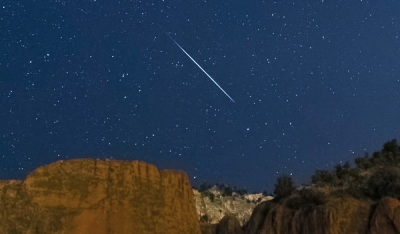
- The Geminid meteor shower is caused by a stream of debris left behind by the asteroid, 3200 Phaethon. When the earth passes through the trail of dust left by 3200 Phaethon every December, we witness the Gemind meteor shower. The Geminid shower has its radiant point* in constellation Gemini. The shower has been active from Dec 4 and one can view it till 16, though its peak is between Dec. 14 and 15. The best time to watch the Geminids is around midnight to early down. During the shower’s peak, skywatchers can see up to 120 meteors per hour.
- The Ursids meteor shower is active every year between December 17 and December 25. This meteor shower is associated with the 8P/Tuttle comet. With the Ursids meteor shower, you will be able to see about 10 meteors every hour. The shower is named after the constellation Ursa Minor, which is thought to be its radiant point. The radiant point of a meteor shower is the celestial point in the sky from which the paths of meteors appear to originate. For example, the Orionids Meteor shower, which occur in October every year, appears to be originating near the constellation Orion the Hunter. Meteor showers are named after the constellations the meteors appear to be coming from.
Meteor showers occur at about the same time every year
Since the earth orbits the sun once a year, at any point in time during the year, the earth is at a predictable spot in its orbit. Meteor showers occur only when the earth’s orbit intersects that of a specific comet, and these intersections occur at fixed intervals.
Picture Credit : Google




